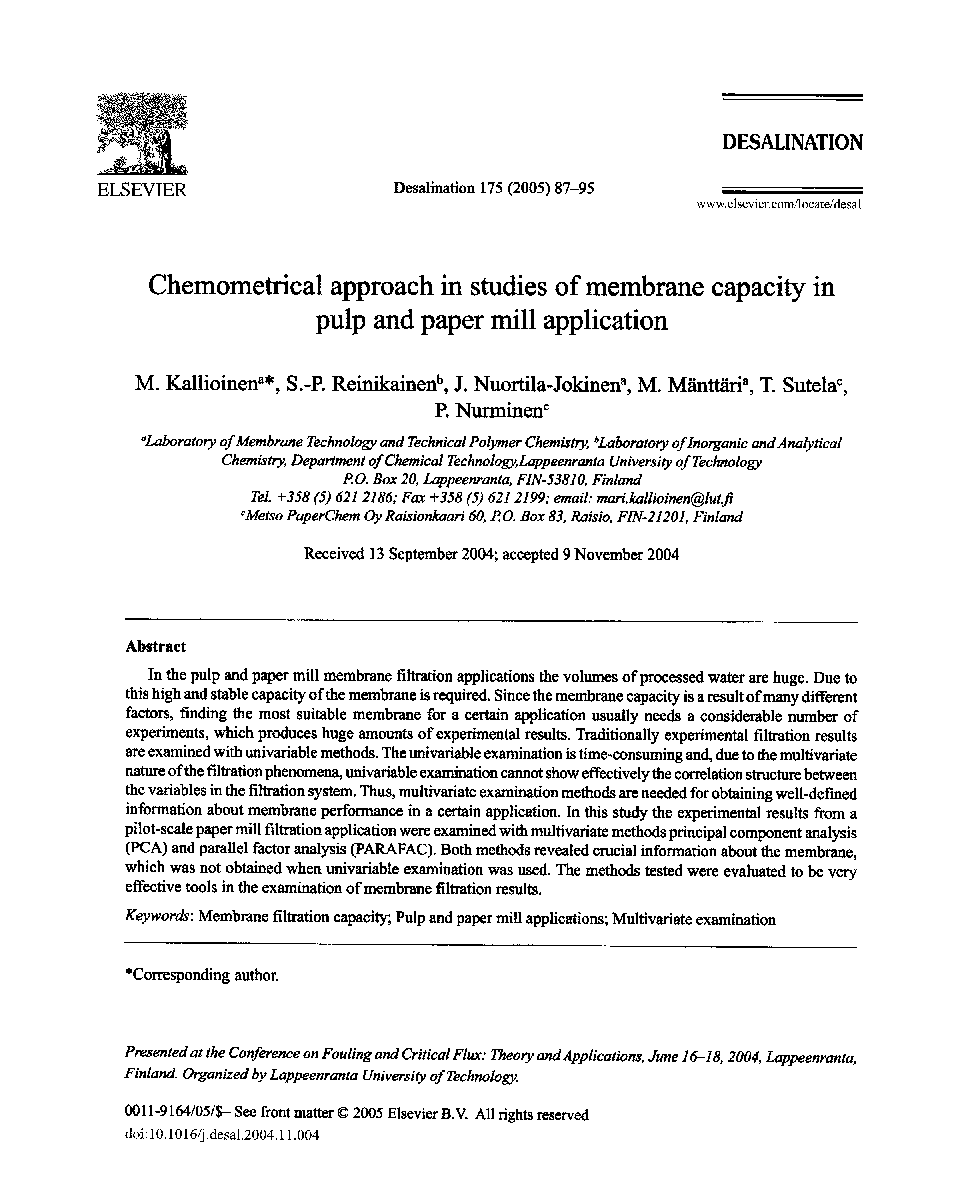| Article ID | Journal | Published Year | Pages | File Type |
|---|---|---|---|---|
| 10386337 | Desalination | 2005 | 9 Pages |
Abstract
In the pulp and paper mill membrane filtration applications the volumes of processed water are huge. Due to this high and stable capacity of the membrane is required. Since the membrane capacity is a result of many different factors, finding the most suitable membrane for a certain application usually needs a considerable number of experiments, which produces huge amounts of experimental results. Traditionally experimental filtration results are examined with univariable methods. The univariable examination is time-consuming and, due to the multivariate nature of the filtration phenomena, univariable examination cannot show effectively the correlation structure between the variables in the filtration system. Thus, multivariate examination methods are needed for obtaining well-defined information about membrane performance in a certain application. In this study the experimental results from a pilot-scale paper mill filtration application were examined with multivariate methods principal component analysis (PCA) and parallel factor analysis (PARAFAC). Both methods revealed crucial information about the membrane, which was not obtained when univariable examination was used. The methods tested were evaluated to be very effective tools in the examination of membrane filtration results.
Related Topics
Physical Sciences and Engineering
Chemical Engineering
Filtration and Separation
Authors
M. Kallioinen, S.-P. Reinikainen, J. Nuortila-Jokinen, M. Mänttäri, T. Sutela, P. Nurminen,
